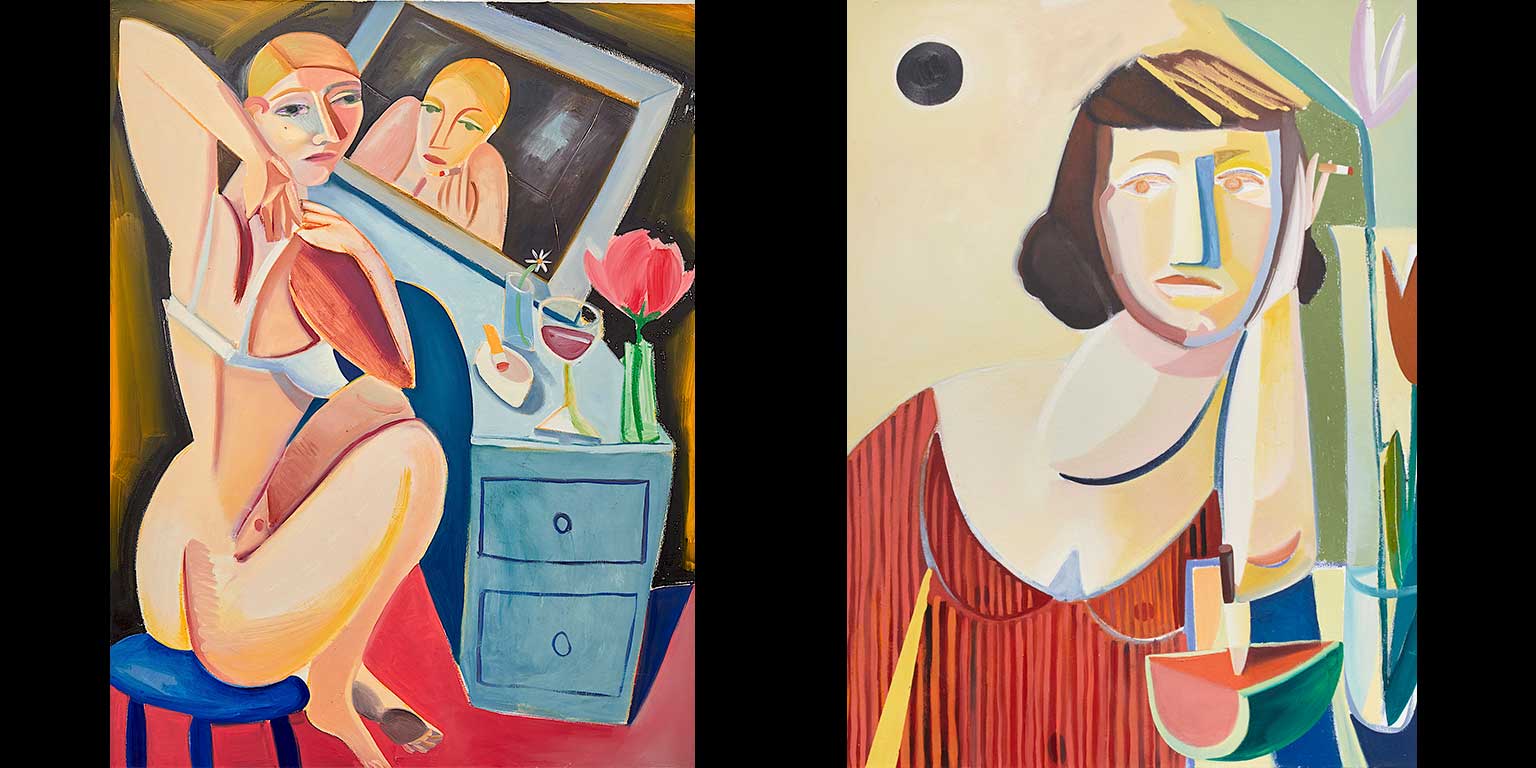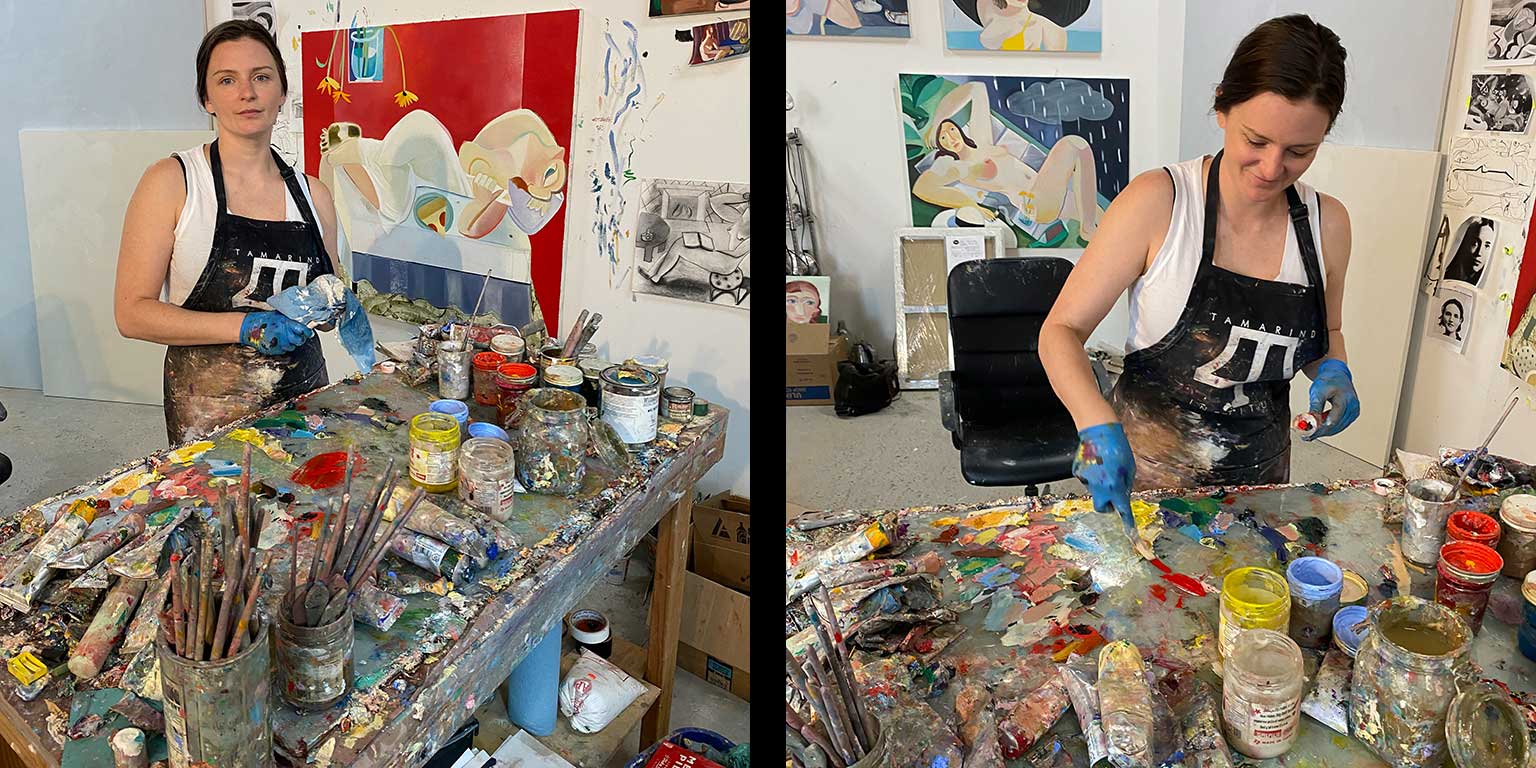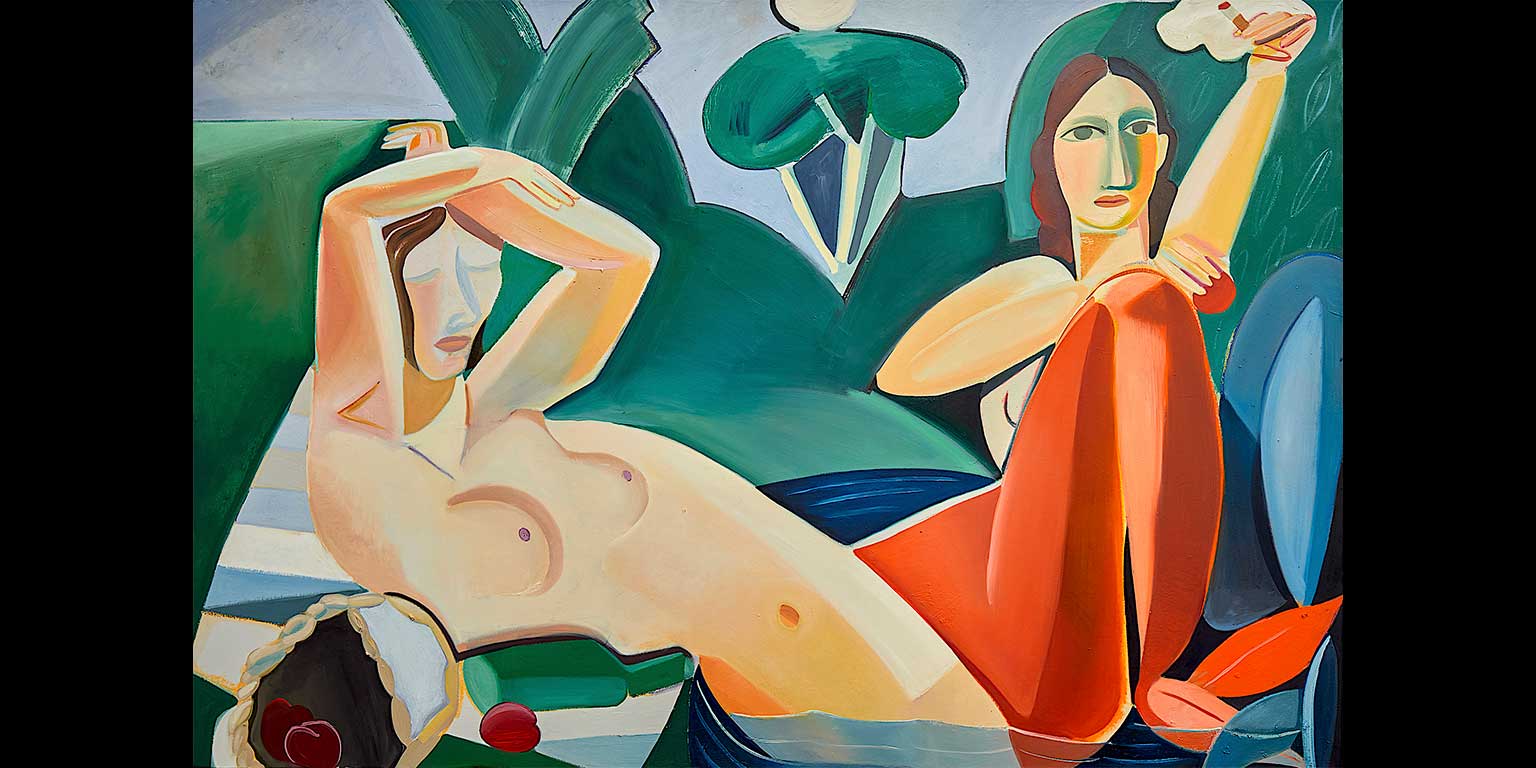By Katie Moulton | Summer 2020
In Tennis Lesson, an oil painting by Danielle Orchard (B.F.A. ’09, Fine Arts), two women lounge across a deep-green expanse the color of crushed velvet. The scene is figurative but flattened à la Cubism, natural forms cut into color blocks: pale blue, rich peach, a golden shoulder. Though the female figures are dressed in classic American sportswear, they hold no rackets. Instead, one woman palms a beer bottle, the other a cigarette, their white skirts hiked carelessly above their thighs. They stare out of the frame, but their gazes don’t rest on the viewer. They are beyond even leisure, engrossed in a moment that’s intimate, irreverent, and ultimately inscrutable. Yet unlike the classical art muses they reference, their sphinxlike moment belongs to them.
“Depictions of women in painting can seem remote, but by borrowing the same gestures, I try to make them deeply introspective,” says Orchard, a 34-year-old Brooklyn-based artist. “Playing with existing moods and viewers’ expectations can suggest an unconsidered interior life.”
Beyond the canvas, Orchard and I are two women volleying a conversation via satellite. It’s six weeks into national quarantine when we speak over the phone, and there’s an appropriate irony to the conditions of the interview: each of us alone in our private rooms, cut off from sharing a space together. We can’t even meet each other’s gaze in a videoconference; Orchard’s studio has spotty Wi-Fi.
So, she describes her studio in East New York in words: a converted single-floor church with high ceilings, increasingly paint-splattered concrete floors (“I’m getting slightly nervous about my deposit,” she jokes), and plentiful, if diffuse, light. A fellow painter renovated the space, and he expanded the doorframes because he understood firsthand the challenge of moving large canvases. This detail mirrors Orchard’s work: an artist’s embodied empathy that results in slight but profound shifts.







